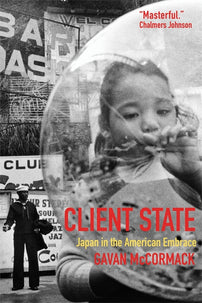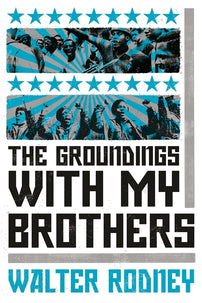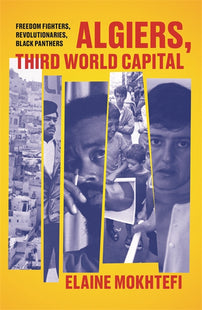On the Eve of March 1st: Imagining Peace in an Age of Violence
Today marks 100 years since the March 1st Movement began in Korea, a movement that helped to coalesce the burgeoning Korean resistance to Japanese colonial rule. In this article, Boduerae Kwon places the movement in the context of national liberation struggles of the years after the First World War.

The Spontaneity and Chaos of “Representation”: Revolution Without Organization
The decade between 1910 and 1920 witnessed revolutions breaking out throughout the world, but it is difficult to find one both as spontaneous and as widespread as the March 1st Movement in what was then a united Korea[1]. Transcending geographical, ideological, and class divisions to elicit nationwide participation, and emerging after nearly a decade of oppressive Japanese colonial rule that completely banned any kind of political or social organizations, the March 1st Movement was in many ways without precedent.
Of course, some individuals and small groups—both in Korea and overseas—had already issued their own version of the Korean Declaration of Independence and had been active in Korean independence movement activities long before March 1, 1919.[2] Yet for the most part, the March 1st Movement began without the support of international organizations or networks. At the time, there were no cohesive political organizations or structures in Korea, and although various religious organizations played a considerable role in distributing copies of the Declaration of Independence and spreading news regarding the protests, their activities were often limited to specific regions.
Instead, the movement demonstrated the extent to which protestors resolved to take matters into their own hands and shape their destiny. This was a decade dominated by the Wilsonian doctrine of “national self-determination,” which offered the possibility of asserting the conditions of each nation’s existence on its own terms, fortified by the collapse of the previously established world order and power structures. At the end of the Declaration of Independence issued by the March 1st Movement, only one of numerous such declarations produced and disseminated in those months, 33 individuals who had been selected without much deliberation from various religious denominations signed their names on behalf of the Korean nation, and by doing so had declared themselves the representatives of all.[3] Despite bypassing any kind of formal election or democratic process of selection, the 33 Representatives demonstrated a collective resolve that was to prove the spark that set the country ablaze.
On March 1st itself, a considerable number of protestors involved in the actions had originally come to Seoul to attend the state funeral for Emperor Kojong, and ended up participating in the protest purely by chance. The main actors were ordinary people residing in rural villages who had prepared their own copies of the Declaration of Independence and the national flag without any external guidance or support. Without any kind of system to mobilize the people, the protest’s success was contingent upon its size and location. In some cases, it began through a lone individual’s decision to cry “Mansei!”[4], that cry then being taken up by other voices and swelling into a huge collective protest. Yet in other instances, those same cries were met with no response other than arrest.
Anger born of destitution, oppression, and discrimination, and the longing for security, freedom, and equality, gave rise to this immense political energy, which was shaped by plunging into the depths of “chaotic openness.”[5] It was precisely the strength of this immediate uprising that allowed for the possibility of imagining alternatives to the given parliamentary system. Closing the gap between language and reality, the act of “declaration” served as the impetus for invoking both a temporal and political immediacy—a leap into the future.
***
Less than two weeks after the March 1st Movement, Kim Kyu-sik arrived in Paris for the Peace Conference talks. The 39-year-old adopted son of missionary Horace Underwood, Kim was a religious and military organiser proficient in several languages, having studied in the United States and participated in revolutionary activities across China, Russia, and Mongolia. In many ways he was an obvious choice to represent the land known as Korea.[6] Yet he was not the only such representative. Various individuals from overseas Korean organizations in Russia, China, and the United States (including Syngman Rhee, who would become South Korea's first president after the division of the peninsula) had also been selected. For the most part, though, the difficulties of obtaining passports and travel expenses frustrated their attempts to travel to Paris.
In the end, it didn't matter: the conditions of colonialism made it impossible for Africa and Asia to send delegates that fulfilled the requirements as defined by parliamentarianism, i.e. officially approved through elections or a legislative assembly –generally, such structures simply did not exist for the colonized. Despite these setbacks, “unofficial” delegates from colonized countries painstakingly travelled to Paris in hopes of an audience with one of the Five Major Powers. A young Vietnamese man named Nguyen Tat Thanh, later known to the world as Ho Chi Minh, went so far as to borrow a suit from a French friend in trying to meet with Wilson.[7] In contrast, the Senegalese delegate succeeded in meeting with George Clemenceau, the Prime Minister of France at the time, and would later participate in the Pan-African Congress organized by W.E.B. DuBois.[8] Nevertheless, the lukewarm response by the major powers made it clear that self-determination was not for all nations.
Even the Chinese delegation, which had been formed through officially recognized means, was repeatedly excluded from the talks and their concerns dismissed. Their fierce efforts to block Japan's power were no match for the meteoric rise of that nation's authority among the “Five Major Powers.” Korea was ignored and ostracized to an even greater extent. In the documents concerning the Paris Peace Conference, Kim Kyu-sik’s name is entirely absent and that of “Korea” appears only once: in May, after the March 1st Movement had been nearly completely extinguished, in a news story by an American reporter interviewing the Japanese delegation.[9]
****
In 1919, the sense that both catastrophe and utopia were simultaneously imminent gave rise to a new experience of time, one that manifested itself in immediacy. Within this context, critical reflection and reconstruction of the concept of “representation” took place in many populations as they sought to close the gap between the people and its representatives. Was political mediation truly necessary? Was it impossible for individuals or for the people themselves to become the stimulus for change? Citing Marx, Lenin said that under capitalism “the oppressed are allowed once every few years to decide which particular representatives of the oppressing class shall represent and repress them in parliament!”[10] It was not obvious that this Leninist vision would triumph everywhere, but the power of his vision was reflected in many of the national liberation struggles: “We cannot imagine democracy, even proletarian democracy, without representative institutions, but we can and must imagine democracy without parliamentarism if criticism of bourgeois society is not mere words for us.”[11]
Contrary to the anticipations of utopia catalyzed by the Wilsonian moment, the majority of Europe regressed to the previous world order after the Paris Peace Conference. Although Europe succeeded in maintaining their illusive utopia by getting rid of imperialism domestically and founding a system of nation-states, colonialism abroad continued unchecked and untouched. On the other side of the world, the nascent Japanese Empire began its imperial expansion in full swing. The seeds of the rapidly expanding colonial liberation movements were sown in the early twentieth century, but they would only come to fruition after the devastating experience of World War II.
The representatives of the March 1st Movement were born amid the turbulence of this world history. The appellation of “33 National Representatives,” a title that has persisted to this day, was merely one of numerous experiments in dismantling and revitalizing the very concept of “representation.” Through the popular uprisings of the March 1st Movement, the 33 National Representatives were able to ratify their legitimacy as representatives of the people, and their successors capitalized on the movement’s revolutionary force by establishing the Korean Provisional Government in Shanghai the following month. However, in the spring of 1919, there were as just many groups declaring themselves the “Korean Provisional Government” as there were individuals proclaiming themselves “representatives.”[12] Without the March 1st Movement as a catalyst, these groups would have likely remained divided and fragmented; it was only through the March 1st Movement that they were able to eventually unify in Shanghai. This was the place where the voluntary “representatives” of the March 1st Movement, without undergoing any kind of parliamentary or electoral system, would settle. Among the numerous experiments in political “representation” held throughout the world at the time, Korea's “33 National Representatives” can perhaps be considered as one of the few success stories. We, as inheritors of their legacy, must remember that this success was made possible only through the courage of ordinary people to revolt—through a single voice crying, “Mansei!”
Boduerae Kwon is Professor and Department Chair of the Korean Language and Literature Department at Korea University in Seoul, South Korea. Her publications include Han'guk kŭndae sosŏrŭi kiwŏn [The Origin of Modern Korean Novels] (2000), Yŏnaeŭi shidae [The Age of Romance] (2003), and 1960nyŏnŭl mutta: Pak Chŏnghŭi shidaeŭi munhwajŏngch'iwa chisŏng [Questioning the 1960s: The Cultural Politics and Intellectual Discourse of Park Chung-Hee’s Era] (2012). Her research interests include the intersection between politics and aesthetics and the re-situation of Korean literature within the discourse of planetary cultural and literary studies. Her latest book, 3wŏl 1irŭi pam: p'ongnyŏgŭi segie kkunŭn p'yŏnghwaŭi kkum [On the Eve of March 1st: Imagining Peace in an Age of Violence], is an extensive cultural history of the March 1st Movement and its aftermath, and is forthcoming from Dolbegae Press (www.dolbegae.co.kr) in March 2019.
Translated by Rachel Park
[book-strip index="1" style="display"][1] While the Egyptian Revolution of 1919 perhaps most closely resembles the mass participation of the March 1st Movement, the revolution in Egypt benefited from a stable, long-standing political structure and the leadership of charismatic individuals such as Sa’ad Zaghul—none of which existed in Korea at the time. See Ziad Fahmy, Ordinary Egyptians.
[2] While the majority of the 33 National Representatives were from religious organizations (Christian, Buddhist, the neo-Confucian/shamanistic Ch'ŏndogyo [the Teaching of the Heavenly Way], there were also some overseas organizations such as the Korean Independence Association and Friendship Society in the United States, and a group of Korean exchange students in Japan that drafted the February 8th Korean Declaration of Independence.
[3] There is little evidence to suggest that these 33 individuals would have been selected as national representatives under normal circumstances or official electoral mechanisms. Indeed, it is difficult to find a parallel case, both before and after the March 1st Movement, in which national representatives essentially chose themselves to represent the people. Moreover, the majority of the representatives received the proposal to sign the Declaration near the end of February and some agreed to sign without even reading it. People such as Paek Yongsŏng, Kim Wankyu, etc. did not receive the contents of the declaration. See Yi Pyŏnghŏn’s The Hidden History of the March 1st Movement.
[4] Translator’s note: While “Mansei” literally means “Ten Thousand Years” or “Long Live Korea!”, it has taken on connotations that far surpass its literal translation. The collective uprisings during this time are often referred to as the “Mansei Protests” and it has come to embody a sense of the revolutionary spirit, collective uprising, and resistance to colonial rule that imbued the times. There are also instances of contemporary usage in which it is used to celebrate a collective national solidarity.
[5] James Miller, Democracy Is in the Streets: From Port Huron to the Siege of Chicago (Cambridge, Massachusetts: Harvard University Press, 1994).
[6] Although Kim Kyu-sik was technically a part of the Shinhan Youth Party, it appears that he saw himself as representing the entire nation rather than the interests of the party. That is, he did not identify himself as a delegate of the Shinhan Youth Party of Korea, but in a more inclusive manner—as the delegate for all Korean independence activists. Pyŏngchun Chŏng, “1919nyŏn, p’ariro Kanŭn Kim Kyushik [Kim Kyusik’s Diplomatic Activities Before Paris, March 1919],” Han’guktongnibundongsayŏn’gu [The Korean Journal of the History of the Independence Movement] 60 (November 2017): 83.
[7] Jean Lacouture, Ho Chi Minh: A Political Biography, trans. Peter Wiles (Harmondsworth, Middlesex: The Penguin Press, 1968).
[8] Jay Winter, Dreams of Peace and Freedom: Utopian Moments in the Twentieth Century (New Haven, CT: Yale University Press, 2008), 64.
[9] Woodrow Wilson, The Papers of Woodrow Wilson, Volume 56: March 17 - April 4, 1919, ed. Arthur S. Link, vol. 56 (Princeton, NJ: Princeton University Press, 1987), 187.
[10] V. I Lenin and Todd Chretien, State and Revolution. (New York: Haymarket Books, 2014), 126.
[11] Ibid., 85-86.
[12] During this period, there were numerous groups that proclaimed themselves the “provisional government” of Korea. The Korean Provisional Government in Shanghai, the People’s Congress of Korea (in Vladivostok) and the Hansŏng Provisional Government (Seoul, Korea) were the most prominent, but other, less verified groups included the Chosŏn Republic Provisional Government, the Koryŏ Republic, the Kando Provisional Government, the Shinhan Republic, etc. – in total, around seven separate “provisional governments” existed at the same time.




